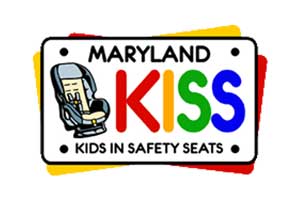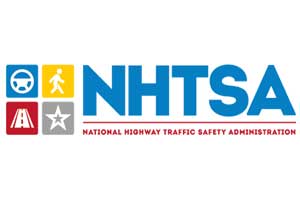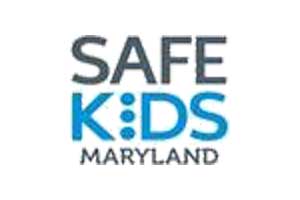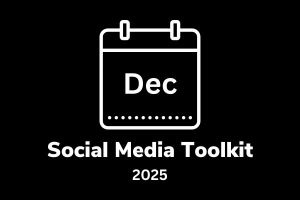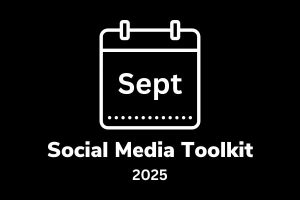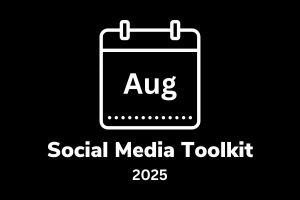Child Passenger Safety
Children are some of our most vulnerable passengers — it’s up to us to help keep them safe.
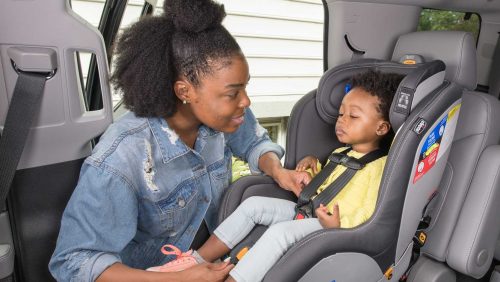
Keeping a child safe in their vehicle is one of the most important things a parent or caregiver can do. From learning about the proper installation of car seats, to knowing when to move onto booster seats or seat belts, there are many things to understand about Child Passenger Safety. Maryland’s network of child passenger safety partners can help you learn how to ensure a child’s safety while in your vehicle.
-
59%
The percentage of car seats installed incorrectly.
Kids in Safety Seats (KISS) offers FREE virtual installation consultations. Learn more.
-
45%
Booster seat use reduces the risk for serious injury by 45% for young children (aged 4–8) when compared with seat belt use alone.
Maryland’s law requires children under eight years old to ride in an appropriate child restraint unless they are 4’9″ or taller. Children eight to 16 years old, not riding in a child restraint, must be secured using a seat belt.
Your Child Deserves the Right Seat
Children grow – it’s a fact of life, and one that can feel overwhelming as you work to keep them safe in the car. As children grow and must move from one type of seat to another, finding the right seat is incredibly important and worth your effort. Knowing when to move to the next stage of car seats can be confusing, but there are plenty of resources to assist with your decision. Remember, it’s important not to rush to change seats as moving your child too early could place them at greater risk for injury in a crash.
The CDC recommends that children ride rear-facing as long as possible — in a convertible car seat until they reach the top height or weight limit allowed by the car seat’s manufacturer. Once a child reaches those height and weight limits, it’s generally OK for them to be placed in a forward-facing seat until they are ready for a booster seat. Below is a graphic for quick guidance, however, see NHTSA’s car seat recommendations for a full guide.
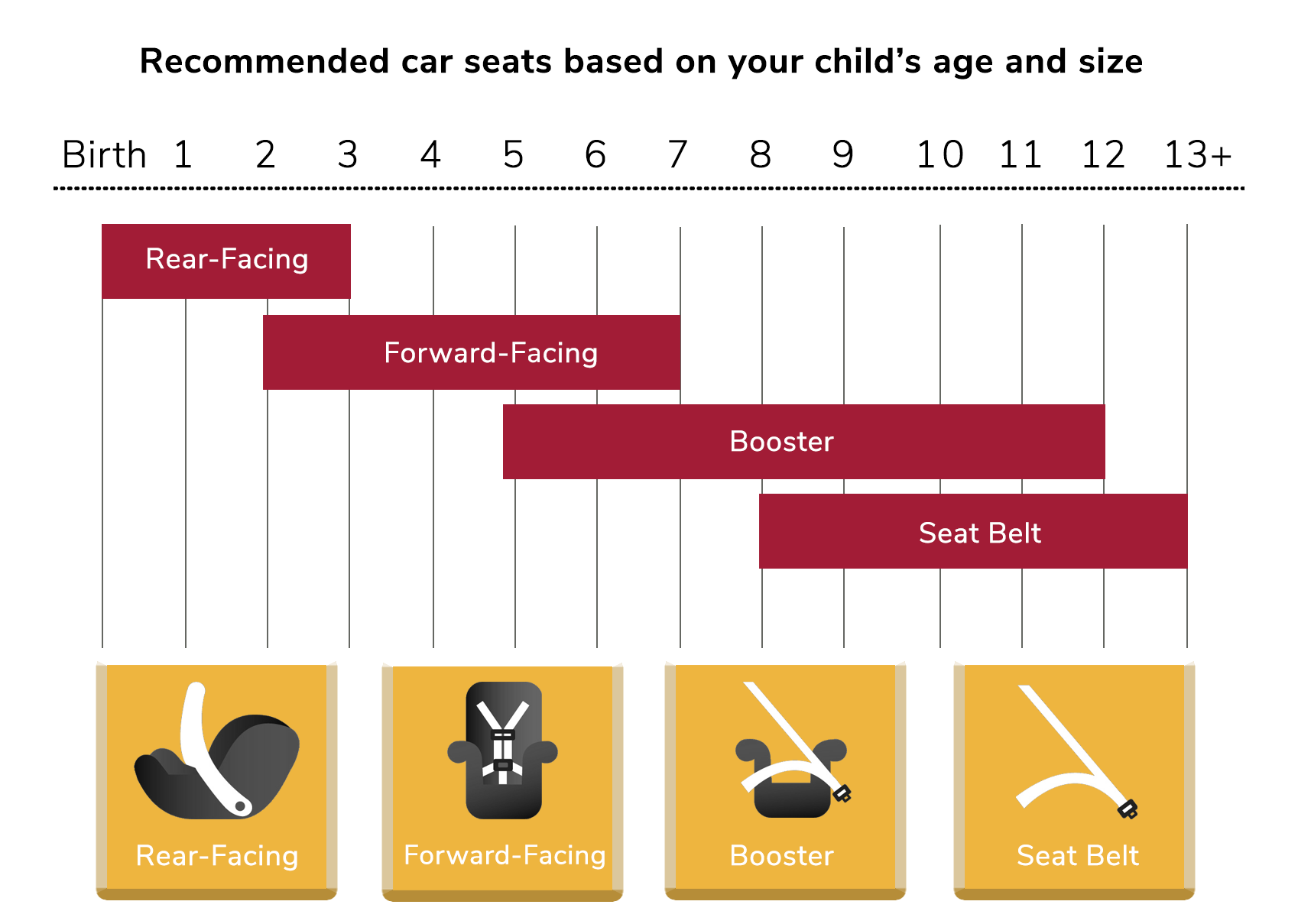 Let’s face it, finding the right seat and using it properly can be very difficult. Additional tips and resources below will help you decide what’s right for your child. One thing is certain, everyone in the car should be buckled up for every ride — children included.
Let’s face it, finding the right seat and using it properly can be very difficult. Additional tips and resources below will help you decide what’s right for your child. One thing is certain, everyone in the car should be buckled up for every ride — children included.
Ensuring Your Child Is Safe
The safest seat for your child is the seat that fits them, is installed correctly, and is used properly on every ride. Below are some tips to ensure your child is traveling safely.
Get more details on buying the right car seat for your child. Reduced cost purchase programs are available for financially eligible families. It is important to remember that all car seats sold in the United States must comply with Federal Motor Vehicle Safety Standard (FMVSS) No. 213. The cost of the seat does not correlate to the level of safety it provides.
Installing a car seat can be tricky. Certified Child Passenger Safety Technicians (CPSTs) are available throughout the state to help! Car seat checks are free and open to all caregivers. Check for one in your area or contact our partners at Kids in Safety Seats (KISS) for more information.
A properly-fitted car seat or booster provides the best protection for your child. Here are more details for getting the right fit.
The back seat is the safest place for all children and those under 13 should never ride in the front. Keeping children in the back seat keeps them farther from front impact crashes — the most common type of vehicle crash. It also ensures they are not impacted by the frontal air bag which deploys at speeds in excess of 200mph and can cause serious injury or death to children — even tall children — whose skeletons are not mature enough to sustain such an impact.
Research shows that children whose caregivers buckle up are much more likely to buckle up themselves. Set a good example – Be the BUCKLED UP Driver.
Unfortunately, many children stop riding in a booster seat before it’s safe to do so. If their bodies are not large enough to sit directly on a vehicle seat with a properly positioned seatbelt, they are at greater risk of injury during a crash. More than 25% of children in the booster seat age-range (4-7 years old) do not utilize a proper child restraint. The reality is that even though Maryland law states a child must ride in a car seat until at least 8, many children are not ready to ride without a booster until they are 10-12 years old.
When Can My Child Ride Safely Without a Booster Seat?
The industry standard for determining a child’s readiness to ride safely in the car without a booster seat is commonly referred to as the 5-step test. Have your child sit in the seat of your vehicle with a seat belt and observe the following:
- Does the shoulder belt cross between the neck and shoulder?
- Is their lower back flush against the vehicle seat?
- Is the lap belt sitting on their upper thighs and across their hip bones?
- Do their knees bend at the edge of the seat?
- Can they sit comfortably and correctly in this position for the entire ride?
If the answer to any of these questions is no, the child should continue to ride in a booster seat. It is important to note that children may fit differently in different seats and cars. Just because they fit without a booster in one seating position, does not mean they are safe to ride without a booster seat universally in all seats and vehicles.
Child Passenger Safety Partners
Maryland Highway Safety Office has a network of partners across the State committed to Child Passenger Safety.
Kids In Safety Seats
Kids In Safety Seats (KISS) is a state-wide program funded through the Maryland Highway Safety Office, but housed within the Maryland Department of Health. KISS’s mission is to reduce injuries and death among Maryland’s children by helping people to obtain and use car seats and booster seats correctly every time a child rides in a motor vehicle.
National Highway Traffic Safety Administration
The National Highway Traffic Safety Administration (NHTSA) offers a variety of resources and tools to determine the right car seat for children. NHTSA also provides updates on recalled seats.
Safe Kids - Maryland
Safe Kids - Maryland has seven in-state local Safe Kids coalitions and eight community partners that provide education and assistance to families across the State. They are led by the Maryland Institute for Emergency Medical Service Systems (MIEMSS) through the EMS for Children’s Department which hosts two statewide meetings and supports two injury prevention conferences annually.
